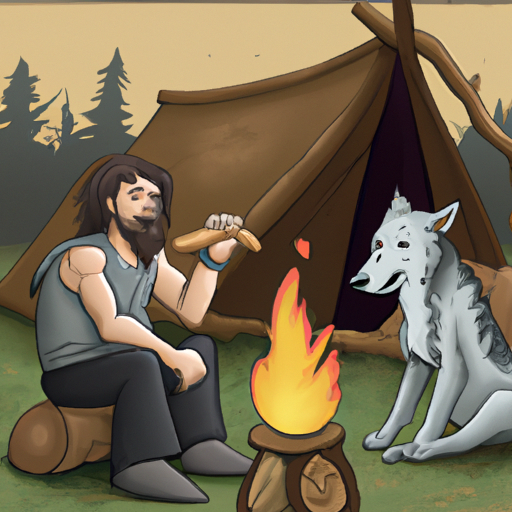A Brief History
From your first childhood pet to your loyal adult companion, dogs have been a part of your life, providing comfort and companionship in abundance. Let’s take a walk down memory lane and discover how these faithful creatures transformed from wild wolves to our beloved pets.
The domestication of dogs began thousands of years ago, likely between 20,000 to 40,000 years ago. Early humans and wolves found mutual benefits in their relationship. Humans provided food scraps, while wolves offered protection and helped in hunting. Over time, this symbiotic relationship evolved, with humans selectively breeding wolves for specific traits, leading to the diverse dog breeds we know today.
The Science Behind Dog Domestication
- Genetic Evidence:
The genetic divergence between wolves and dogs happened thousands of years ago. It’s believed that dogs were the first species to be domesticated by humans. There’s also evidence of interbreeding between different dog and wolf populations throughout history.
- Physical Changes:
Over time, and through selective breeding, dogs began to exhibit physical differences from their wolf ancestors. These include changes in size, fur color and texture, and even behavioral traits like reduced fear and aggression.
- Behavioral Changes:
Dogs have evolved to be more sociable and trainable than their wolf counterparts. They’ve developed the ability to understand and communicate with humans, making them an ideal companion.
The Role of Selective Breeding
Selective breeding played a significant role in dog domestication. Humans began breeding dogs for specific traits, whether for hunting, guarding, companionship, or herding. This led to the wide variety of dog breeds we see today.
| Dog Breed | Primary Use |
|---|---|
| Beagle | Hunting |
| Border Collie | Herding |
| Rottweiler | Guarding |
| Labrador Retriever | Companionship |
Dogs and Human Society
Dogs have found their place in human society, not only as pets but also as service dogs, therapy dogs, and working dogs. Their roles are diverse, from providing companionship and emotional support, assisting people with disabilities, to performing tasks in various industries.
Frequently Asked Questions (FAQ)
When were dogs first domesticated?
Dogs were first domesticated thousands of years ago, likely between 20,000 to 40,000 years ago.
How were dogs domesticated?
Early humans and wolves formed a symbiotic relationship, with humans providing food and wolves offering protection. Over time, through selective breeding, these wolves evolved into the domesticated dogs we know today.
Why were dogs domesticated?
Dogs were domesticated for several purposes such as for hunting, guarding, companionship, or herding.
What changes occurred in dogs during domestication?
Physical and behavioral changes occurred in dogs during domestication. These include changes in size, fur color and texture, and increased sociability and trainability.
What is the role of dogs in human society today?
Today, dogs serve various roles in human society, from being pets, to service dogs, therapy dogs, and working dogs, providing companionship, assistance, and performing tasks in various industries.



